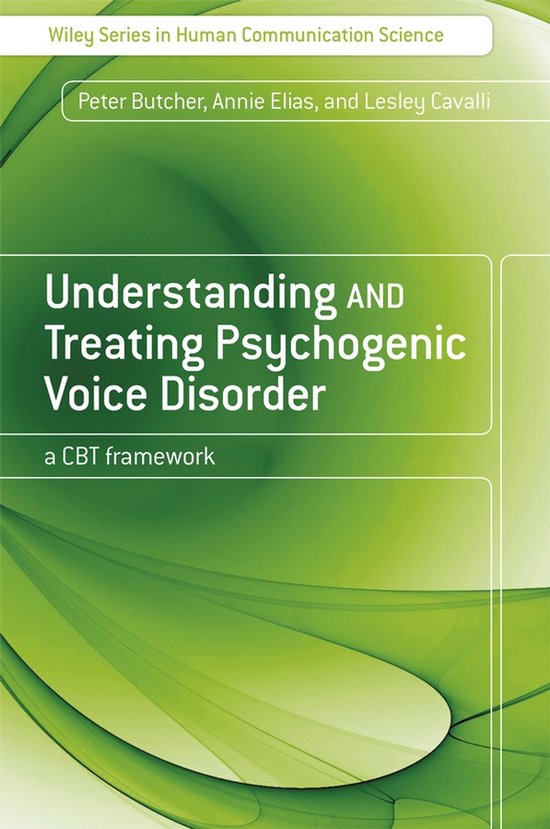
| Taal: | en |
| Bindwijze: | Paperback |
| Oorspronkelijke releasedatum: | 16 maart 2007 |
| Aantal pagina's: | 238 |
| Illustraties: | Nee |
| Hoofdauteur: | Peter Butcher |
| Tweede Auteur: | Annie Elias |
| Co Auteur: | Lesley Cavalli |
| Hoofduitgeverij: | John Wiley & Sons Inc |
| Editie: | 1 |
| Extra groot lettertype: | Nee |
| Product breedte: | 156 mm |
| Product hoogte: | 14 mm |
| Product lengte: | 229 mm |
| Studieboek: | Ja |
| Verpakking breedte: | 152 mm |
| Verpakking hoogte: | 19 mm |
| Verpakking lengte: | 229 mm |
| Verpakkingsgewicht: | 345 g |
Beginning with a new classification of psychogenic voice disorder, the authors then provide a description of the CBT model and give helpful and systematic guidelines on using this approach in combination with speech and language therapy skills. They provide invaluable guidance on how to extend the standard voice case history to include a psychosocial assessment, and how to apply symptomatic voice therapy principles and techniques for this patient population.
Later chapters show how to assess and work with patients suffering from symptoms of anxiety and lowered mood, and how to understand and respond to various forms of psychopathology that may present in association with voice disorder. Finally, detailed case studies illustrate how an experienced therapist might respond to individual assessment and treatment challenges. Many of the assessment and therapy tools described are available at
Understanding and Treating Psychogenic Voice Disorder provides a comprehensive description and methodology for speech and language therapists, ENT specialists working in voice, and all academics studying the voice. It also makes an ideal introduction for clinical psychologists who wish to expand their experience in this field.